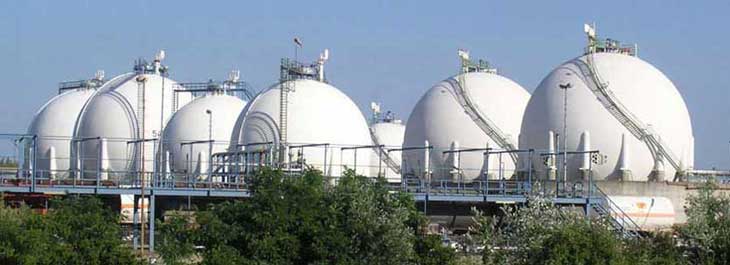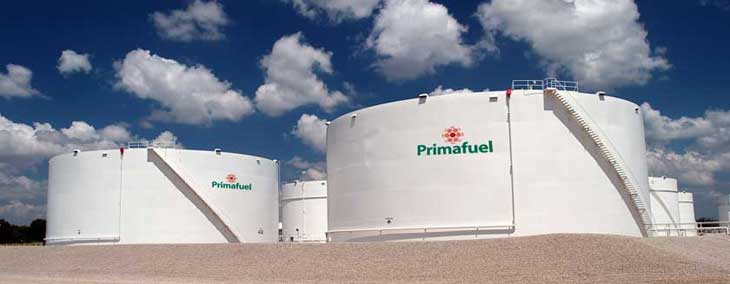 |
Differences between pressure vessels and storage tanks |
Pressure tanks and vessels are available in a wide range of shapes and sizes to meet the specific requirements of different industries. These specialized containers are designed to withstand high pressures, usually over 15 pounds per square inch gauge (PSIG), and are capable of safely storing gases, vapors and liquids under this increased pressure.
What are Pressure Vessels?
Regardless of ambient pressure, a pressure vessel is a sealed storage vessel capable of holding liquids, gases or vapors at pressures greater than 15 pounds per square inch (PSI). These vessels undergo rigorous manufacturing processes and must be used within certain temperature and pressure thresholds because of the inherent hazards associated with stored energy.

TYPES OF PRESSURE VESSELS
Chemical reactors: Chemical reactors are sealed pressure vessels that contain and/or agitate the reactants, products and catalysts involved in a chemical reaction. These reactors are equipped with agitators or stirrers to facilitate mixing of the reactants and improve molecular interactions. Baffles are often incorporated to prevent the liquid from spinning and to create a suitable flow pattern in the reactor.
Heat exchanger: Heat exchangers provide heat transfer between two or more fluids. They are widely used in industries such as food processing, pharmaceuticals, energy production and bioprocessing. The efficiency and performance of heat exchangers are influenced by factors such as the temperature, flow rate and thermal properties of the fluids involved, as well as the thermal properties of the conductive partition in the case of indirect-contact heat exchangers. The temperature difference between the hot and cold fluids, along with the internal pressure exerted by the fluids, creates stress on the materials used in the heat exchanger.
Process vessel: Process vessels include a broad category of vessels used in industrial processes such as agitation, mixing, decanting, distillation, mass separation and chemical reactions. The specific process being used and the nature of the chemicals being processed can affect the internal pressure changes in a process vessel.
Boiler: Boilers serve as heat transfer devices that use fuel, nuclear power or electricity as the heat source. They usually consist of closed vessels that facilitate the flow of heat from the source to a fluid. Boilers are primarily used for heating liquids, and in the boiler the liquid often undergoes a phase transition from liquid to vapor. The steam produced by the boiler is used for power generation and various heating applications. Steam boilers operate under high pressure to drive turbine blades efficiently, requiring strong boilers that can withstand the increased pressure and heat stress. It is important to note that the strength of materials generally decreases with increasing temperature. Read the article below for more information about pressure vessels..
What are Storage Tanks?
In the field of storage, a "tank" usually refers to a metal or plastic vessel designed to store liquids for varying periods of time, from short to long periods of time, while maintaining atmospheric pressure (usually around 15 pounds per square inch gauge, or 15 PSIG) and temperature. These tanks can vary considerably in size, from compact containers that can hold only a few gallons to huge tanks that can hold significant amounts of liquid.

APPLICATIONS FOR STORAGE TANKS
Tanks serve as storage vessels for various substances, such as water, oil, gasoline, diesel fuel and various chemicals. The choice of materials for tank construction depends on the specific cargo being stored. Certain liquids may react with certain metals, necessitating the use of alternative materials such as plastic or concrete. Steel is usually used for larger tanks because of its advantageous combination of strength, affordability, general availability and formability. On the other hand, plastic materials are often used for smaller tanks because they offer a cost-effective solution despite being heavier than steel. Choosing the right tank material ensures safe containment and preservation of the stored substances.
TYPES OF STORAGE TANKS
There are several types of tanks available, each with a unique design and functionality. Read the article below for more information about storage tanks..
In conclusion, the distinction between tanks and pressure vessels lies in their design, functionality and intended uses. Tanks primarily serve as storage vessels for liquids, using different materials, such as steel and plastic, depending on the substance stored. They come in different types, each tailored to specific requirements.
Pressure vessels, on the other hand, are sealed containers that can hold liquids, gases or vapors at pressures greater than 15 PSI. They find applications in industries such as pharmaceuticals, food and beverage and energy production. Heat exchangers, boilers, process vessels and chemical reactors are examples of types of pressure vessels, each designed to meet specific needs while complying with strict regulations and safety standards. Overall, both tanks and pressure vessels play an essential role in maintaining the integrity, safety and efficiency of industrial processes in various sectors.
Related Post(s)

Heat Exchangers are devices built for efficient Heat Transfer from one medium to another...